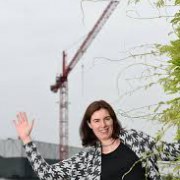Young children in exhibitions: (re)drawing boundaries
Children need boundaries – even in science centres and museums. They need a corner or a room dedicated to them; detailed guidance to be able to properly interact with exhibits; a step-by-step list of how to craft take-home objects; a scenography that caters for the likes and interests of kids... Are these boundaries too tight? Which ones could and should be redrawn? What would be the benefits? And what needs to be taken into account when doing so?
This session’s speakers will look at different boundaries set for small children in exhibitions and discuss with the audience how far we could and should push them. Speakers will each describe a different type of boundary (e.g. location, guidance and scenography) and explain where they set limits and why. The workshop as a whole will redraw the boundaries for small children in science centres.
Facilitator
Digitalisation - Senior Consultant Digitalisation
Session speakers
Supervisor Guest Services
Following the spirit of constructivism: When children construct their personal learning experiences by exploring exhibits on their own: how can we provide the scaffolding and help needed within the exhibition without destroying their initial exploring phase?
After 13 years operation phaeno has decided to develop a new area for children. The opening is planned for the end of 2020. The specific needs of families with young children and kindergarten groups led us to this decision. At the moment we don’t know if this area will be strictly reserved for children all the time or for specific phases of the day/week. This decision will be part of the conceptional process.
For the first time we plan to set up some elements in elevation (climbing structure, runways, bridge) to use and explore the fantastic architectural space from phaeno and we aim to have a kind of “common design” for these elements and the exhibits, connecting the whole to a visible “entity” in the exhibition.
San Francisco
United States
What aspects of exhibits and their contexts need to be considered, so that both children and their accompanying adults perceive that they are in a safe space for exploration and learning? Along with providing a balance of freedom and guidance for learning in children’s exhibitions, science centres need to plan and design for how children learn through play: That needs a comfortable balance between freedom and safety. In particular, the learning adventures of very young children are supported by a safe space within which they can focus and experiment. Science centres need to keep in mind the differing and changing developmental needs of children, and the concerns and interests of their accompanying adults.
Why lower the age range for muséums and science centers ? Providing an exhibition experience for small children (2 years old) is a challenge. Do we need to build boundaries to fit their needs or can we break them to create family places?
By knowing their needs and their capacities, we will discuss the places and exhibits suitable for all, we will consider the interactions between them and the others (children, adults ...) and the limits not to be exceeded.





